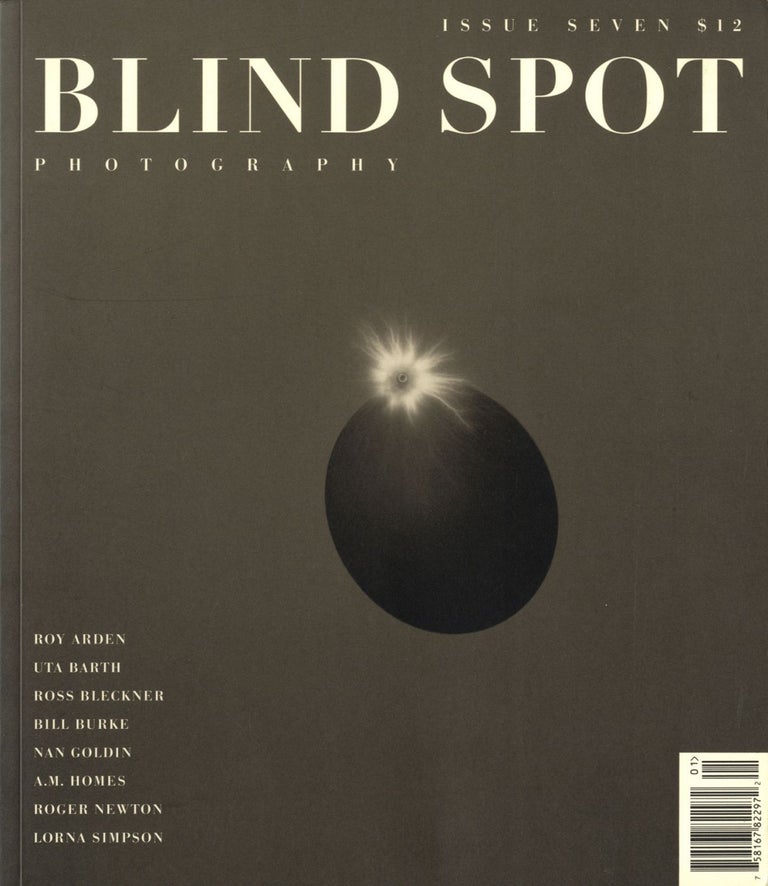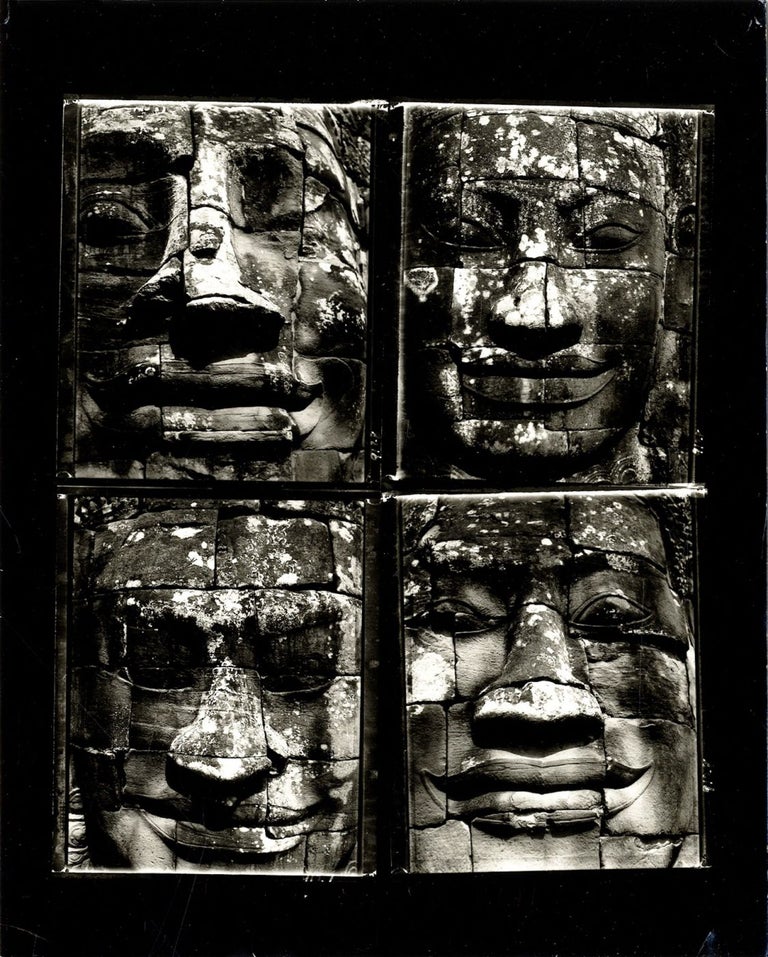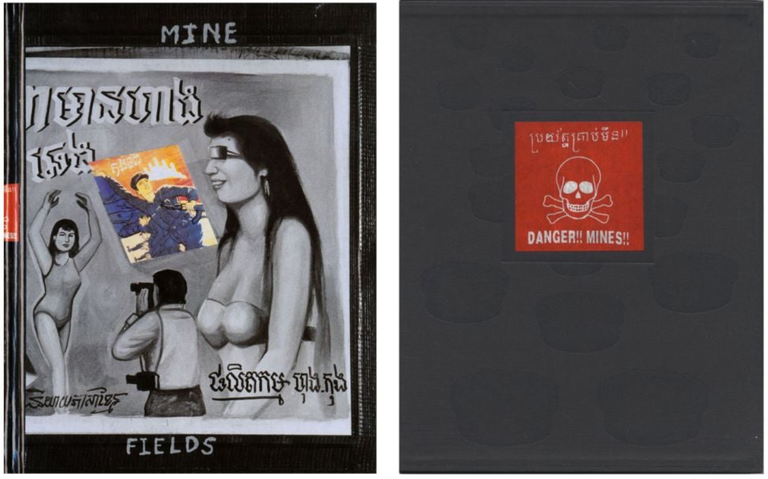Bill Burke: Autrefois, Maison Privée, Special Limited Edition (with Toned Gelatin Silver Print "Woman and Elephant, Phnom Penh, 1994") [SIGNED & STAMPED]
Publisher: New York and Dorchester, Massachusetts: powerHouse Books and Bill Burke, 2004
Edition: 1st Edition
Binding: Hardcover
ISBN: 1576871800
Condition: New / New
Item #: 107720
$750.00
Specifics
EDITION PRICE: Price to increase as edition sells out.
2004/2010. Special slipcased limited edition of 25 copies, with an original sepia-toned gelatin silver print ("Woman and Elephant, Phnom Penh, 1994"), in an edition of 25 plus 1 artist's proof/AP. [The photograph is reproduced as the first plate of the book.] The print's image size [and paper size] is 12-7/8 x 10 inches, and was printed in 2010 from the original negative. Each print (archivally processed on double-weight fiber-based paper) is hand-titled, signed and dated recto in the lower edge of the image area in permanent archival black ink by Burke, and numbered verso in pencil by Burke with his personal black 'Bînh Fótò' stamp added. The book is signed by Burke and numbered (edition number corresponding with the print) in black ink inside a 'Special Edition' stamp designed by Burke for this edition, on the half-title page. The book is also stamped with Burke's personal 'Actual Signature' and 'Bînh Fótò' stamps on the half-title page. The print is enclosed in a clear archival Mylar sleeve and laid in the book, which is housed in a hand-made slipcase covered in black Italian Canapetta cloth.
About the book: First edition, first printing. Hardcover. Fine dark blue cloth, with title stamped in gilt on spine, with dust jacket. Photographs and Afterword by Bill Burke. Essay by Bernard Fall. Letter by Prince Sirik Matak. 184 pp., with 98 tritone (some quadratone) plates (with variations of tinted varnish applied to each image), beautifully printed by Steidl, Göttingen, Germany. 10-5/8 x 13-5/8 inches. This first edition was limited to 2500 hardbound copies to be distributed in North America.
Condition
New. The print, book (opened only for signature) and slipcase are in flawless condition.
Description
Burke's new book, 'Autrefois, Maison Privee' (meaning "once a private house") is somewhat of a departure from his previous titles. The book is a collection of photographs made in Cambodia of primarily French-influenced architecture. While published in the form of a 'monograph' and a seeming departure from Burke's more autobiographical books, the individual images in 'Autrefois, Maison Privee' often contain strange, apparently contradictory and disturbing references to Cambodia's history, as seen through Burke's unique perspective of the region's architecture.
Printed by Steidl Verlag in tritone 'Autrefois, Maison Privee' is exquisite, and should be one of the very best books published of the year! From the publisher: "Photographer Bill Burke has taken annual trips to Indochina ever since he first traveled to Asia in 1982. Although he usually photographed the people, Burke became aware of how the architecture absorbed as much as reflected the region's history. Transfixed by buildings like the municipal offices built by the French in the 1860s, the vaulted railroad stations and post offices of the 1930s, and the art-deco fantasy cinemas of the 1960s, Burke saw the region as an architectural museum, rotting in the humidity and untouched by economic ambition, and began to trace the cultural changes in the area through its architecture.
In Autrefois, Maison Privée--the title means "once a private house," and refers to prevalent reappropriation of once private houses for municipal and government uses--Burke captures the dramatic history of the area, from the influence of French colonialism through the rise of communism and the devastating effects of the Vietnam War, to the repopulation of Cambodia after the fall of Pol Pot and the Khmer Rouge and the opening of the area to capitalism. Burke's first entrée into Indochina occurred during the period of Soviet control, a period of recovery that allowed for the current explosion of capitalism, which has already begun to devastate an architectural heritage that was well preserved in the deep freeze of socialism. What the B-52s and tanks didn't destroy during decades of war, developers from neighboring countries are busily replacing and defacing with their shrines of commerce. Autrefois, Maison Privée is the only book to delineate this transformation; featuring Burke's signature gritty layout and design, Autrefois, Maison Privée is a marvel livre deluxe of history, architecture, and photography."
About Bill Burke:
Since the early 1980s, Bill Burke has photographed extensively in Southeast Asia, focusing primarily in Cambodia, Laos and Vietnam. Burke's haunting and layered examination of the landscape and people is informed by the collective political and social conscience galvanized by the United States' lengthy occupation and annihilation of these regions before, during, and after the Vietnam War. His lifelong desire to connect personally and viscerally to the people he meets sets his work in an altogether separate category from most artists who photograph outside their circumscribed "experience."
Neither overtly political nor proscriptive, Burke's work instead recognizes the personal is indeed political. Gone are the cultural stereotypes we have long seen in images of Southeast Asia. Instead we are able to experience the intensity of the individual through Bill Burke's idiosyncratic and careful observation. He obliterates the notion that the "documentary photograph" is a vehicle for "truth" and compellingly shows the viewer that it is always a form of personal or political propaganda. 'I Want to Take Picture' (originally published by Nexus Press in 1987) is a combination artist book and 'travelogue.' It is considered by many to be one of the very best, disturbing and important books in the history of photography.
From Bill Burke (1987): "Each day, I was thinking about practicality, is my pass in order, how do I get there, who do I meet that will get me through. The philosophical thoughts came later. When I realized that I had access to the camps and could see the Khmer Rouge, it was like being able to see the Devil. It seamed to be an incredible opportunity."
From an interview with Bill Burke by Willis Hartshorn (New York City, June 1987): "Hartshorn: 'Do you find it problematic that in a politically savage environment your pictures are often ambiguous as to who's good and who's bad?' Burke: 'I have no problem with ambiguity. Again, all the information is filtered, everything I know about it is secondhand. I know what the refugees at the border say and what books say. I heard how bad the Khmer Rouge were, and then as I read more I found out the other people had been bad too. The people who were victims at one time were victimizing others at another time. There are two sides, the information is slanted, and it's good that people understand that. . . I would like things to be spelled out clearly so I wouldn't have to think about it. But that's not the way it is. I can't say this is this and that is that. There is no indisputable truth.'"


![Bill Burke: Autrefois, Maison Privée, Special Limited Edition (with Toned Gelatin Silver Print "Woman and Elephant, Phnom Penh, 1994") [SIGNED & STAMPED]](https://vincentborrelli.cdn.bibliopolis.com/pictures/107720.jpg?auto=webp&v=1567543683)
![Bill Burke: Autrefois, Maison Privée, Special Limited Edition (with Toned Gelatin Silver Print "Woman and Elephant, Phnom Penh, 1994") [SIGNED & STAMPED]](https://vincentborrelli.cdn.bibliopolis.com/pictures/107720_1.jpg?auto=webp&v=1567543683)
![Bill Burke: Autrefois, Maison Privée, Special Limited Edition (with Toned Gelatin Silver Print "Woman and Elephant, Phnom Penh, 1994") [SIGNED & STAMPED]](https://vincentborrelli.cdn.bibliopolis.com/pictures/107720_2.jpg?auto=webp&v=1416436684)
![Bill Burke: Autrefois, Maison Privée, Special Limited Edition (with Toned Gelatin Silver Print "Woman and Elephant, Phnom Penh, 1994") [SIGNED & STAMPED]](https://vincentborrelli.cdn.bibliopolis.com/pictures/107720_3.jpg?auto=webp&v=1416436685)
![Bill Burke: Autrefois, Maison Privée, Special Limited Edition (with Toned Gelatin Silver Print "Woman and Elephant, Phnom Penh, 1994") [SIGNED & STAMPED]](https://vincentborrelli.cdn.bibliopolis.com/pictures/107720_4.jpg?auto=webp&v=1416436687)
![Bill Burke: Autrefois, Maison Privée, Special Limited Edition (with Toned Gelatin Silver Print "Woman and Elephant, Phnom Penh, 1994") [SIGNED & STAMPED]](https://vincentborrelli.cdn.bibliopolis.com/pictures/107720_5.jpg?auto=webp&v=1416436689)
![Bill Burke: Autrefois, Maison Privée, Special Limited Edition (with Toned Gelatin Silver Print "Woman and Elephant, Phnom Penh, 1994") [SIGNED & STAMPED]](https://vincentborrelli.cdn.bibliopolis.com/pictures/107720_6.jpg?auto=webp&v=1416436690)
![Bill Burke: Autrefois, Maison Privée, Special Limited Edition (with Toned Gelatin Silver Print "Woman and Elephant, Phnom Penh, 1994") [SIGNED & STAMPED]](https://vincentborrelli.cdn.bibliopolis.com/pictures/107720_7.jpg?auto=webp&v=1416436692)
![Bill Burke: Autrefois, Maison Privée, Special Limited Edition (with Toned Gelatin Silver Print "Woman and Elephant, Phnom Penh, 1994") [SIGNED & STAMPED]](https://vincentborrelli.cdn.bibliopolis.com/pictures/107720_8.jpg?auto=webp&v=1416436695)
![Bill Burke: Autrefois, Maison Privée, Special Limited Edition (with Toned Gelatin Silver Print "Woman and Elephant, Phnom Penh, 1994") [SIGNED & STAMPED]](https://vincentborrelli.cdn.bibliopolis.com/pictures/107720_9.jpg?auto=webp&v=1416436697)
![Bill Burke: Autrefois, Maison Privée, Special Limited Edition (with Toned Gelatin Silver Print "Woman and Elephant, Phnom Penh, 1994") [SIGNED & STAMPED]](https://vincentborrelli.cdn.bibliopolis.com/pictures/107720_10.jpg?auto=webp&v=1416436678)
![Bill Burke: Autrefois, Maison Privée, Special Limited Edition (with Toned Gelatin Silver Print "Woman and Elephant, Phnom Penh, 1994") [SIGNED & STAMPED]](https://vincentborrelli.cdn.bibliopolis.com/pictures/107720_11.jpg?auto=webp&v=1416436680)
![Bill Burke: Autrefois, Maison Privée, Special Limited Edition (with Toned Gelatin Silver Print "Woman and Elephant, Phnom Penh, 1994") [SIGNED & STAMPED]](https://vincentborrelli.cdn.bibliopolis.com/pictures/107720_12.jpg?auto=webp&v=1416436682)


